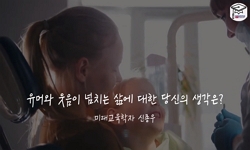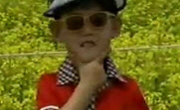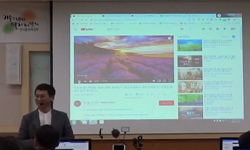이 논문은 그간 우리 소설의 희극성에 대한 연구의 편협성에 문제를 제기하고 우리 소설의 희극적 요소를 다양한 차원에서 분석해낼 필요에서 씌어졌다. 이 논문에서는 그간 희극성을 보여...
http://chineseinput.net/에서 pinyin(병음)방식으로 중국어를 변환할 수 있습니다.
변환된 중국어를 복사하여 사용하시면 됩니다.
- 中文 을 입력하시려면 zhongwen을 입력하시고 space를누르시면됩니다.
- 北京 을 입력하시려면 beijing을 입력하시고 space를 누르시면 됩니다.

한국 현대 소설의 희극성 연구 시론 : 인물의 희극적 결함과 서술태도를 중심으로 = A Study of the Comic in Modern Korean Fiction - Focusing on the Character with Comic Flaw and the Narrator's manners
한글로보기https://www.riss.kr/link?id=A82535347
- 저자
- 발행기관
- 학술지명
- 권호사항
-
발행연도
2011
-
작성언어
Korean
-
주제어
희극성 ; 웃음 ; 희극적 결함 ; 불완전성 ; 서술자 ; 극화된 서술자 ; 생산자 ; 희생자 ; 수용자 ; 무감동성 ; 우월성 ; 열등성 ; 대조 ; 전복 ; 유머 ; 아이러니 ; 설득력 ; 바보 ; 조롱 ; 냉소 ; comic ; comic flaws ; laughter ; human being's imperfectness ; narrator ; dramatized narrator ; producer ; the victim ; consumer ; superiority ; inferiority ; ironic situation ; satire ; fool ; convincingness
-
KDC
810
-
등재정보
KCI등재
-
자료형태
학술저널
-
수록면
393-426(34쪽)
- 제공처
-
0
상세조회 -
0
다운로드
부가정보
국문 초록 (Abstract)
인물의 희극적 결함은 인간의 중요한 불완전성에 해당되는 성격의 결함과 도덕적 결함을 말한다. 서술태도 분석은 소설 고유의 특성인 매개성에 바탕을 둔 것으로, 희극적 서술상황이 ‘생산자(서술자)-희생자 (희극적 결함을 지닌 인물 내지 존재)-수용자(독자)’의 관계에서 생겨나는 것으로 설정하였다. 분석을 위해 서술자와 희생자, 수용자의 관계에 따라 중립적 서술자, 우월한 서술자, 극화된 열등한 서술자로 범주화 하였다.
중립적인 서술자, 곧 생산자의 희극적 장치가 미세하거나 부재하는 경우, 희극성은 거리의 조정보다는 소재의 선택에 의해 드러나고 웃음은 독자의 판단에 맡겨진다. 이 경우 대개, 전통적인 ‘바보 인물’이 부조리한 사회제도에 희생되는 양상을 보여주어 ‘공동체에 편입하는 웃음’이 나타난다. 인물보다 지적이나 도덕적으로 우월한 서술자의 경우, 독자는 서술자에 절대적인 신뢰를 하게 되어 독자의 웃음은 서술자의 도덕적 우월성에 대한 동일시와 공모에 의해 유발된다. 이때의 웃음은 주로 배제와 조롱, 풍자의 웃음이 된다. 극화된 열등한 서술자는 ‘믿을 수 없는 서술자’로서 서술자의 정보와 어조에 대한 독자의 우월성 확보에 의해 웃음이 유발된다. 이 경우 대체로 극화된 서술자가 웃음의 희생자가 되는 반어적 상황이 수반되어 가장 지적인 풍자가 이루어진다.
이 논문은 그간 우리 소설의 희극성에 대한 연구의 편협성에 문제를 제기하고 우리 소설의 희극적 요소를 다양한 차원에서 분석해낼 필요에서 씌어졌다. 이 논문에서는 그간 희극성을 보여준 텍스트로 평가되어 온 작품들을 대상으로, 인물의 희극적 결함과 서술태도가 어떤 방식으로 결합되어 희극성이 표출되는가를 분석하였다.
인물의 희극적 결함은 인간의 중요한 불완전성에 해당되는 성격의 결함과 도덕적 결함을 말한다. 서술태도 분석은 소설 고유의 특성인 매개성에 바탕을 둔 것으로, 희극적 서술상황이 ‘생산자(서술자)-희생자 (희극적 결함을 지닌 인물 내지 존재)-수용자(독자)’의 관계에서 생겨나는 것으로 설정하였다. 분석을 위해 서술자와 희생자, 수용자의 관계에 따라 중립적 서술자, 우월한 서술자, 극화된 열등한 서술자로 범주화 하였다.
중립적인 서술자, 곧 생산자의 희극적 장치가 미세하거나 부재하는 경우, 희극성은 거리의 조정보다는 소재의 선택에 의해 드러나고 웃음은 독자의 판단에 맡겨진다. 이 경우 대개, 전통적인 ‘바보 인물’이 부조리한 사회제도에 희생되는 양상을 보여주어 ‘공동체에 편입하는 웃음’이 나타난다. 인물보다 지적이나 도덕적으로 우월한 서술자의 경우, 독자는 서술자에 절대적인 신뢰를 하게 되어 독자의 웃음은 서술자의 도덕적 우월성에 대한 동일시와 공모에 의해 유발된다. 이때의 웃음은 주로 배제와 조롱, 풍자의 웃음이 된다. 극화된 열등한 서술자는 ‘믿을 수 없는 서술자’로서 서술자의 정보와 어조에 대한 독자의 우월성 확보에 의해 웃음이 유발된다. 이 경우 대체로 극화된 서술자가 웃음의 희생자가 되는 반어적 상황이 수반되어 가장 지적인 풍자가 이루어진다.
다국어 초록 (Multilingual Abstract)
It deals with the fiction considered comic, and analyzes how comic flaws and the narrators' specific manners are united and arouse the comic.
Comic flaws refer to some defects in the character's personality and his or her moral weakness, which reveal the human being's imperfectness.
The narrative manners are analyzed by the aspects of the mediacy, an essential characteristic of the fiction, and the comic situation is brought about through the relationship between the producer (the narrator)-the victim (the character with comic flaws)-the consumer (the reader). According to the relationship between the three agents, the narrators are categorized into three types: the neutral narrator, the superior narrator, and the dramatized inferior narrator.
The neutral narrator means the comic devices are not found or meager: here the comic is evoked not by the adjustment of the distance but by the choice of the matter, and the laughter totally depends on the reader's judgment. In this case the traditional "fool" is generally victimized by the unreasonable social system, where the laughter integrates the character and the reader altogether into the community.
If the narrator is superior to other characters intellectually or morally, the reader shows a complete confidence on the narrator, so that the reader's laughter is aroused through his or her identification with the narrator and a kind of conspiracy between them. This laughter mostly produces an exclusive, derisive, or satirical one.
The dramatized inferior narrator is an unreliable narrator and the laughter is evoked by the reader's sense of superiority to the narrator. The ironic situation where the dramatized inferior narrator falls into a victim, produces the most intelligent satire.
This paper aims to raise a question of the narrowness of the researches on the comicality of the Korean fiction and to analyze its comic elements from various aspects. It deals with the fiction considered comic, and analyzes how comic flaws and the n...
This paper aims to raise a question of the narrowness of the researches on the comicality of the Korean fiction and to analyze its comic elements from various aspects.
It deals with the fiction considered comic, and analyzes how comic flaws and the narrators' specific manners are united and arouse the comic.
Comic flaws refer to some defects in the character's personality and his or her moral weakness, which reveal the human being's imperfectness.
The narrative manners are analyzed by the aspects of the mediacy, an essential characteristic of the fiction, and the comic situation is brought about through the relationship between the producer (the narrator)-the victim (the character with comic flaws)-the consumer (the reader). According to the relationship between the three agents, the narrators are categorized into three types: the neutral narrator, the superior narrator, and the dramatized inferior narrator.
The neutral narrator means the comic devices are not found or meager: here the comic is evoked not by the adjustment of the distance but by the choice of the matter, and the laughter totally depends on the reader's judgment. In this case the traditional "fool" is generally victimized by the unreasonable social system, where the laughter integrates the character and the reader altogether into the community.
If the narrator is superior to other characters intellectually or morally, the reader shows a complete confidence on the narrator, so that the reader's laughter is aroused through his or her identification with the narrator and a kind of conspiracy between them. This laughter mostly produces an exclusive, derisive, or satirical one.
The dramatized inferior narrator is an unreliable narrator and the laughter is evoked by the reader's sense of superiority to the narrator. The ironic situation where the dramatized inferior narrator falls into a victim, produces the most intelligent satire.
목차 (Table of Contents)
- 【국문초록】
- Ⅰ. 한국 소설과 희극성 연구
- Ⅱ. 희극성의 소통 구조와 서술 태도
- Ⅲ. 희극적 결함, 웃음의 설득력
- 참고문헌
- 【국문초록】
- Ⅰ. 한국 소설과 희극성 연구
- Ⅱ. 희극성의 소통 구조와 서술 태도
- Ⅲ. 희극적 결함, 웃음의 설득력
- 참고문헌
동일학술지(권/호) 다른 논문
-
- 우리문학회
- 김경숙(Kim Kyung-Suk)
- 2011
- KCI등재
-
- 우리문학회
- 김혜정(Kim Hae-Jyung)
- 2011
- KCI등재
-
- 우리문학회
- 김용기(Kim Young-Ki)
- 2011
- KCI등재
-
- 우리문학회
- 신주철(Shin Ju-Cheol)
- 2011
- KCI등재




 DBpia
DBpia






